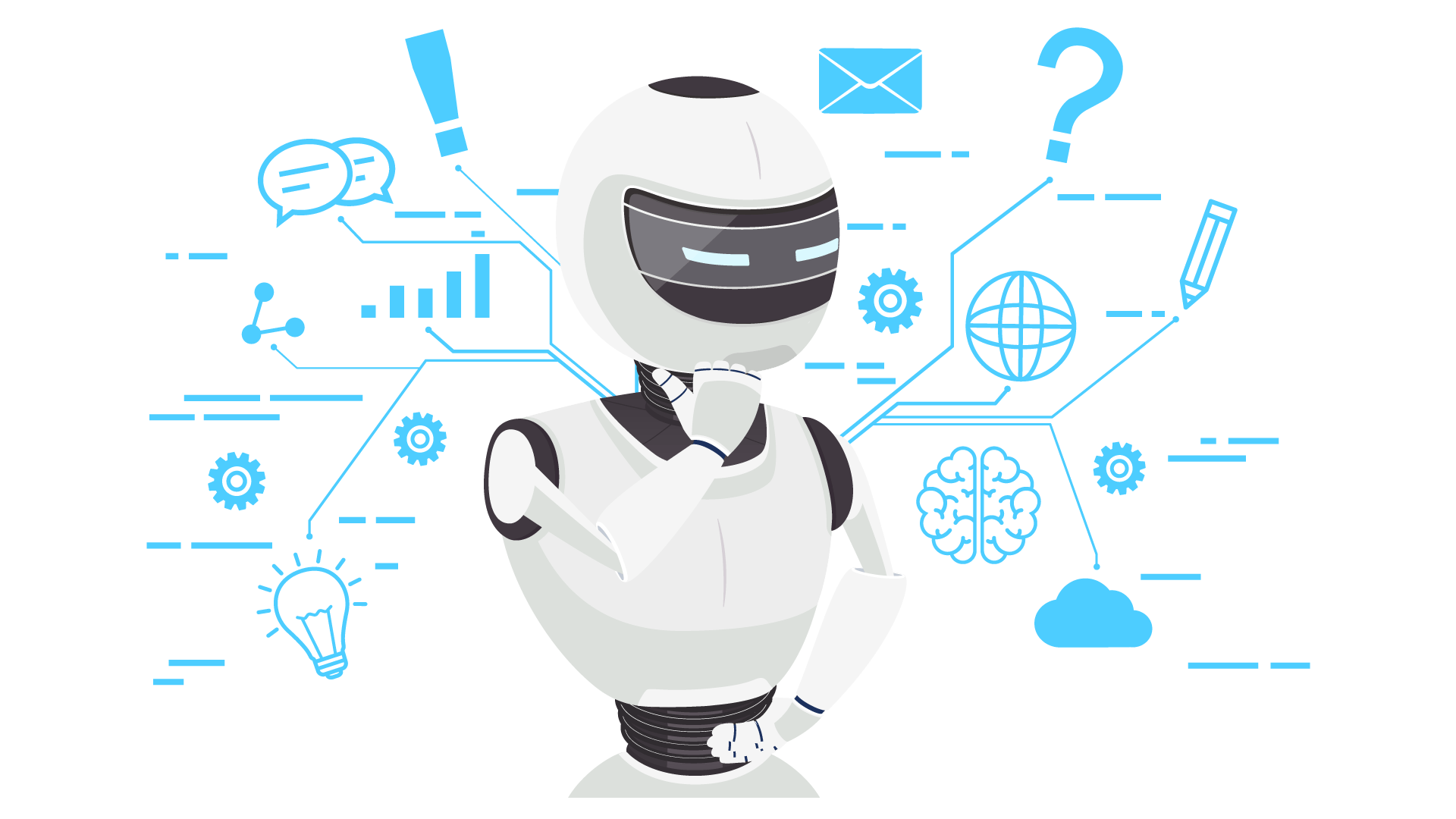It's been five years since ISS Art agency started to focus on AI software solutions development and integrations. This is a great time to look back and think whether this trend in custom software development is still relevant or we should completely go into something more trendy like web3 or back to classic web/mobile development focus.
To do this, firstly let's think about the reasons – why did we initially start focusing on artificial intelligence? Because for us, as a custom software development agency, this is a great opportunity to enter new business and even new business domains.
Long time ago, software development solved the problem of automating business processes and any other business or production activities. Artificial intelligence allows you to do the same but at a qualitatively new level. Thus, we can significantly improve and rework the tasks solved by the classic software that are in a massive variety of business domains.
In fact, it's hard to even imagine how great a variety of possible tasks exist that can be solved with the help of artificial intelligence.
Below we have compiled a list of the most unexpected and specific tasks that can be solved using artificial intelligence. We have already encountered some of them in our work, but some turned out to be a surprise for us.
Whiskey brewing
It might not appear so at first glance, but AI and the whisky industry are a perfect match.
The distillery feeds recipes, sales data, and customer preferences into machine learning models, the model highlights mixes which should be most popular and of the highest quality, the result – AI whiskey.
It's a refreshing, new look on an old classic. Of course, some might say it was inevitable that artificial intelligence would eventually develop enough to make its drinks one day. But how does it work, and what can you expect from drinking this futuristic beverage?

The process is very simple and involves using a still that has been retrofitted with AI technology. Then the system takes the whisky through its paces—mashing, fermenting, distilling and maturing.
One company that is using AI to innovate their whiskey production process is Kentucky-based liquor maker Beam Suntory, which uses an algorithm they developed called "Beam Complete". This system predicts how flavors will mix with each other and what adjustments should be made before a batch of products leaves for bottling.
The whisky industry is a perfect candidate for AI because it relies on data to provide feedback insights and recommendations to perfect the perfect blend.
Thankfully, this can be done without any human input—all you need is the right algorithms and bots that know how to extract meaning from mountains of data. The sudden increase in demand shows no signs of slowing down, as people have become more and more interested in craft distilleries. And, with AI making in-roads into this industry, we can only expect more good things in the future.
AI Death prediction
By using socioeconomic and clinical data, researchers developed an artificial intelligence tool to predict 30-day mortality risks in patients with cancer.
Cancer is one of the leading causes of death in the United States each year. Using the artificial intelligence tool, medical professionals can identify patients who are at high risk and provide early intervention and resolutions for reversible complications.
Additionally, the tool can determine those patients approaching end of life (EoL) and refer them to early palliative and hospice care. Doing so will improve the patient's quality of life and symptom management, according to the study.
Physicians will often delay advance care planning and EoL conversations until a patient is in the terminal phase of life. Current methods and models of predicting mortality vary in accuracy, only include clinical factors, and do not provide additional information to clinicians.
However, authors observe that including sociodemographic and geographic factors in AI predictive analytic models can identify patients at greater risk of short-term mortality, providing better management and care for patients with cancer.
Researchers conducted the study by selecting 3671 patients from a de-identified database representing a large community-based hematology/oncology practice. Data from the de-identified database included electronic health records (EHRs), billing data, and socioeconomic determinants of care.
The data collected from patients included demographic data (e.g., gender, race, age) and cancer information (e.g., type, stage). Additionally, researchers looked at socioeconomic data, including lifestyle choices and the individual's living environment. The socioeconomic data was really important in the analysis.
The machine learning algorithm was able to accurately predict the 30-day mortality among patients with cancer. The study also examined the algorithm's ability to predict 60-, 90-, and 180-day mortality, which showed similar results.
Researchers concluded that the machine learning algorithm's ability to identify patients with cancer at risk of 30-day death has the potential to improve outcomes for patients with reversible clinical factors. Additionally, the AI system can prevent unnecessary and harmful care for those who are close to EoL.
Generating whole ADS videos
Video creative automation platform Phyron takes a data feed from its brand customer – the dealership or carmaker. With a minimum of four images from the individual car for sale, a video is produced with the Phyron software.
AI recognizes the key properties in the car images and edits them automatically into the video template. It can identify differences between interior and exterior photos and also strip away backgrounds and replace them with neutral ones. The software also adds special effects and shadows for a professional look, as well as logos and other brand assets.

Competitors are raising the bar in a content quality and production race. So, a static image that can be more easily taken from a website to social media marketing promotion won't work anymore, for big brands and even for local car dealerships. This raises the need for videos, and for the democratization of video content production through automated solutions, as well as copywriting for written messages. There is also a similar push to standardize and simplify the production of 3D images.
Phyron CEO Johan Sundstrand sees expectations for automotive marketing to be similar in Europe and North America. They use similar performance metrics (inventory turn, increased views, lead generation, cost per video) that lead to a similar value proposition from the Phyron technology. Dealerships want minimal time spent by staff updating listings and more time spent with customers.
Fraud detection in finance
and other domains
With increasing online shopping, fraudulent transactions are also on the rise. Companies use machine learning algorithms to identify and block fraudsters. You are watching "Game of Thrones" when you get a call from your bank asking if you have used your card for "$X" at a store in your city to buy a gadget. It was not you who bought the expensive device using your card; it has been in your pocket all day. How did the bank flag this purchase as fraudulent? Thanks to Machine Learning algorithms. Financial fraud costs $80 billion annually, where only Americans are at risk worth $50 billion per annum.
One of the most important goals for applications of machine learning in the banking/finance domain is fraud prevention, i.e., detecting and minimizing any fraudulent activity. Machine learning is best suited for this use case as it can scan through vast amounts of transactional data and identify patterns, i.e., if there is any unusual behavior. Every transaction customer makes is analyzed in real-time and given a fraud score representing the likelihood of the transaction being fraudulent. In case of a fraud transaction, the transaction is blocked or handed over for a manual review. All of this happens in the blink of an eye. If the fraud score is above a particular range, a rejection will be triggered automatically. Otherwise this would be difficult for a human being to review 1000's data points in seconds and make a decision without the application of machine learning.

It should end with the fact that, apparently, the direction of artificial intelligence has not yet had time to become obsolete.
Today we can outline top five business domains, which apply machine learning in a most successful way:
- Fraud detection;
- Virtual personal assistants;
- Product recommendations;
- Speech recognition;
- Customer segmentation.
In our work, we continue to receive amazing and interesting tasks from customers, and we will remain an AI focused agency to tackle them.
